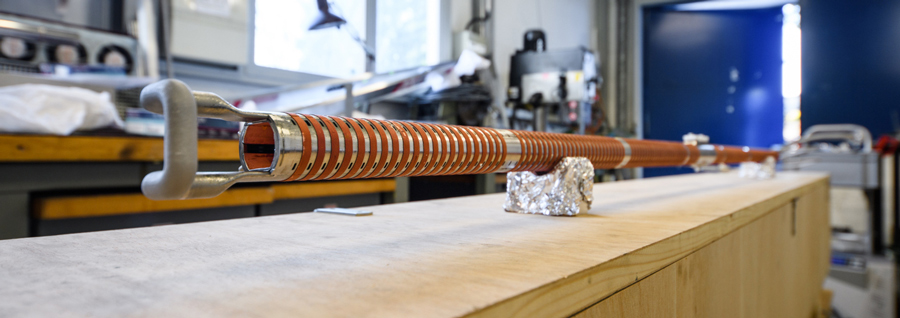Tag: standard model
SAQFT: Algebraic quantum field theory for elementary and composite particles

Quantum field theory (QFT) was a crucial step in our understanding of the fundamental nature of the Universe. In its current form, however, it is poorly suited for describing composite particles, made up of multiple interacting elementary particles. Today, QFT for hadrons has been largely replaced with quantum chromodynamics, but this new framework still leaves many gaps in our understanding, […]
Read More… from SAQFT: Algebraic quantum field theory for elementary and composite particles
Creating a unified theory for the fundamental physical interactions

The search for a theory which unifies the Universe’s four known fundamental forces has now endured for over a century. Recently, Dr Joachim Herrmann at the Max-Born Institute, Germany, revisited the geometrisation programme of unified field theory from the 20th century, in combination with the modern theory of elementary particles. He has shown that a possible solution may be found […]
Read More… from Creating a unified theory for the fundamental physical interactions
The cold, dark secrets of the Universe in few-body physics

Understanding fundamental processes in physics, particularly physics beyond the Standard Model, is no easy task. Experiments and theories looking for new general theories to describe many of the phenomena that are missing in the Standard Model focus on particle physics experiments at places like CERN. Professor Jesús Pérez Ríos of the atomic, molecular, and optical (AMO) physics group at Stony […]
Read More… from The cold, dark secrets of the Universe in few-body physics
The Future Circular Collider: Its potential and lessons learnt from the LEP and LHC experiments

As researchers seek to learn more about the fundamental nature of our universe, new generations of particle accelerators are now in development in which beams of particles collide ever more precisely and at ever higher energies. Professor Stephen Myers, former Director of Accelerators & Technology at CERN and currently Executive Chair of ADAM SA, identifies both the positive and negative […]
A solution to dark matter: New evidence for hydrogen’s second flavour

Following on from his previous research, Professor Eugene Oks at Auburn University, Alabama, presents even further evidence that an explanation for dark matter could lie with a ‘second flavour’ of hydrogen atoms. This time, he analyses the results of an extensive survey of millions of galaxies to assess the characteristics of ‘gravitational lensing’: a light-bending effect, first predicted by Einstein. […]
Read More… from A solution to dark matter: New evidence for hydrogen’s second flavour
New insights into the strong interaction with strange exotic atoms

The strong interaction plays a fundamental role in our universe. The difficulty of performing precision measurements has limited our understanding of this interaction. Dr Catalina Curceanu at the National Institute for Nuclear Physics (INFN) in Frascati-Rome is leading ambitious new efforts to study and measure the strong interaction in her lab. Her team’s work is centred around an intriguing form […]
Read More… from New insights into the strong interaction with strange exotic atoms
Searching for axions: Revealing the dark matter particle

Dark matter is one of the central mysteries of modern cosmology. Even after many years of investigation into the true nature of this enigmatic component of our Universe, every search for its cause has so far come up short. Dr David J. E. Marsh at the University of Göttingen believes that the solution lies with a fundamental particle which was […]
Read More… from Searching for axions: Revealing the dark matter particle
Uncovering the underlying geometrical structure for an extension of the theory of electroweak interaction and the Dark Matter problem

Describing the behaviour of all fundamental particles and forces as we know them, the Standard Model has held up to every experiment physicists have undertaken to date. Frustratingly, however, the theory remains far from complete. Dr Joachim Herrmann at the Max Born Institute in Berlin suggests the tangent bundle as the underlying geometrical structure for an extension of the Standard […]
NUMEN Project: Exploring key aspects of neutrinoless double beta decay by nuclear reactions

The Standard Model of particle physics may represent our most advanced understanding yet of the universe’s fundamental building blocks, but many physicists believe it is incomplete. One of the most enticing prospects for updating the model lies with ‘neutrino-less double beta decay’ – a process which has been theorised for many decades, but has yet to be observed. Professor Francesco Cappuzzello […]